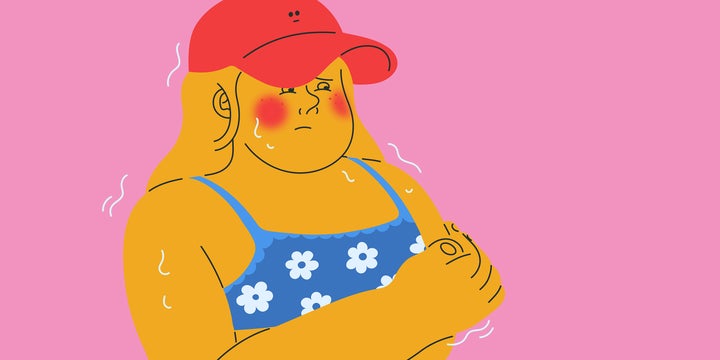
Underwear is a customary Christmas gift, or was in my family. We believed in practical presents to accompany the more glamorous, big-ticket items.
When I was 11, I unwrapped my parcel of socks and pants, and with horror found something else – “A training bra!” broadcast a great aunt in front of my entire family. I was mortified, and, in true tween fashion, threw the box across the room and ran away.
Revisiting my rejection of the “training bra,” I’m struck with a couple of thoughts. The garment was in many ways a symbol of the transition into adolescence, and more specifically, puberty. It signalled the changes my body was undergoing, changes I was grappling to understand and accept. The ceremonious unwrapping was a public event – even if the “public” consisted of my extended family. The training bra, a limp, cotton covering with a plastic hook closure, functioned to broadcast my entering puberty, much like my great aunt’s proclamation to the room. I was suddenly made aware that my changing body was indeed a public spectacle that others might be interested in.
From Monica Lewinsky’s blue dress to Madonna’s coned bras, the culture around me sent conflicting messages about the sexual significance imprinted into women’s clothing.
Female sexuality was at once a stain and also a slogan of self-expression – a dichotomy that was confusing to a young girl. It so seemed this “training bra” was my passport into this spectacle of objectification. What exactly was this bra supposed to be training me in – neither I nor the culture around me seemed to have a concrete answer. All I knew was I didn’t want any part of it.
“I was suddenly made aware that my changing body was indeed a public spectacle that others might be interested in.”
The training bra is “emotionally freighted as a symbol of initiation into a group,” says Sandra Goldmark, associate professor of professional practice in theatre at Barnard College. She notes that clothing functions to communicate group identity. “So much of our clothing is communicating so much – gender, status and group membership,” she explained. As for the bra “you’ve got [those aforementioned] three big-ticket identifiers.” Traditionally, she says, older girls have higher status and “any marker of status can be a big moment.”
She explains” “Girls can be ambivalent [about initiation into a group] or maybe not comfortable with gender markers, which can be resisted by children.” (Anyone remember this scene from Dazed and Confused?)
Today, the term “training bra” feels archaic. “Training bras don’t really ‘train’ anything,” says Whitney Casares, the founder and CEO of the Modern Mamas Club. “As girls first enter puberty, the breast tissue is generally the first area to enlarge into what paediatricians call ‘breast buds.’ Sometimes training bras are used to help cover young girls’ nipple areas when their breasts are too small to fit a traditional bra, if the young girl or her parents feel embarrassed by the appearance of the breast buds through a shirt. An undershirt is just as effective for this purpose. There’s no medical reason a girl entering puberty needs to wear a ‘training bra’.”
Goldmark notes that the “choice to cover the nipple” is really a question of “social control.” Bras might provide a level of modesty over something the wearer might feel “psychological discomfort over.” Some people, she said, might view the bra as a “tool of oppression,” while others see it as “comfortable and necessary.” Either way, she noted, as a garment it’s 100% symbolic.
Casares agrees the term “training bra” is outdated and Goldmark points out that gender has “become more fluid in clothing.” How you present, even privately — as undergarments are hidden, after all – is a marker of agency, she says.
Ironically, these days, I find myself gravitating to bra styles that, sartorially speaking, are throwbacks to the training bras of my youth. Brands like Calvin Klein and Skims offer cotton coverings without underwire piping or much in the way of physical support. Am I reclaiming this garment, I wonder? Or rejecting the pushup bras and high-tech shapewear intended to sculpt me into a postmodern pinup avatar? Am I too psychologically modest to go bare? Is this choice an attempt to appear younger, forever chasing the status associated with a woman’s age?
I think about the son of my good friend, who is transgender. With the support of his mum, he decided the onset of “breast buds” will signal a new chapter, one where pubertal blockers will inhibit the growth of breasts. This is a stance characterised more by authenticity to self as opposed to a rejection laden with embarrassment or anger. There’s so much agency in this choice, in rejecting the training bra and all that comes with it, that we can truly say: we’ve come a long way, baby.